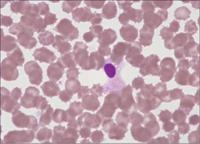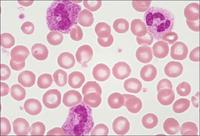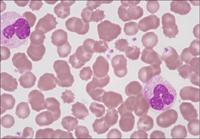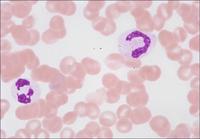Granulocytes showing storage related degradation (for example, vacuolisation) can be seen in EDTA blood samples from healthy persons after 1-2 days (here after 48 hours). In samples from severely ill patients this can occur already after several hours.

|
|
|
|




